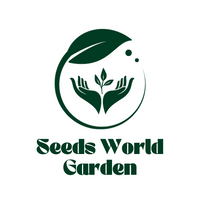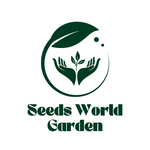Quantity: 50+ Seeds
Color: As picture
Free Shipping and Buy 2 Get 1 Free
1.Seeds are a vital part of nature, providing the necessary nutrition for plants to grow and thrive. They are the foundation of a healthy, vibrant ecosystem. Seeds come in a variety of shapes, sizes and colors, and each type of seed has its own unique properties and characteristics. Seeds can be found in fruits, vegetables, grains, nuts and legumes, and they are a great source of vitamins, minerals, proteins and other essential nutrients.
2.Seeds are incredibly resilient, with some varieties able to survive extreme temperatures and conditions. They are also incredibly versatile, capable of sprouting in a wide variety of soils, and they can be used in many different ways. They can be planted in the ground, sown in trays or pots, or even eaten directly. Seeds can be germinated in water, stored in the refrigerator, or dried and stored in air-tight containers.
3.Seeds are a great source of nutrition for both humans and animals. High in dietary fiber, protein, and vitamins and minerals, they can provide a healthy and nutritious addition to any diet. Seeds are also a great source of essential fatty acids, and they are often used in organic and natural products.
4.Seedlings are the result of seeds that have been planted and germinated. They are small plants, usually with two leaves, which are the first stage of a plant's life. Seedlings are vulnerable and need to be nurtured and protected. They need to be kept moist and warm, and placed in an environment that is conducive to their growth.
5.Seeds and seedlings are the basis of a healthy, vibrant ecosystem, and they are essential for a sustainable future. They provide food, fuel, fiber and medicines, and they are a renewable source of energy, helping to reduce our dependence on fossil fuels. Seeds and seedlings are an invaluable resource, and they are essential for the health of our planet.
How to Grow Your :
1. Soak in water for 24 to 48 hours before you t them. This allows moisture to penetrate the coat and leads to swelling of the ’s parts to spur germination.
2. Find a location with well-drained, organic-rich, sandy or silt loam and with a minimum average temperature of about 60 degrees Fahrenheit during the t’s early growth. The most favorable temperature range is between 75 to 80 degrees. The t should ideally receive six hours of sun per.
3. Till the soil to rid it of weeds and to increase air circulation. Apply compost to the soil after tilling.
4. Place two or three in a hole about ½ to 1 inch deep in the soil along a fence or under a 6-foot-tall trellis form. The holes should be 15 to 23 inches apart and rows 3 to 5 feet apart.You can also start in small plastic pots in a commercial soil mix.
Shipping:
All orders Free Shipping and Buy 2 Get 1 Free. Normally North American delivery time will take 7-14 days (shipping delays due to large orders will add 1-3 weeks depending on time). Other areas please wait 14-28 days for the order to arrive.
RETURN POLICY
We have a 30-day return policy, which means you have 30 days after receiving your item to request a return.


